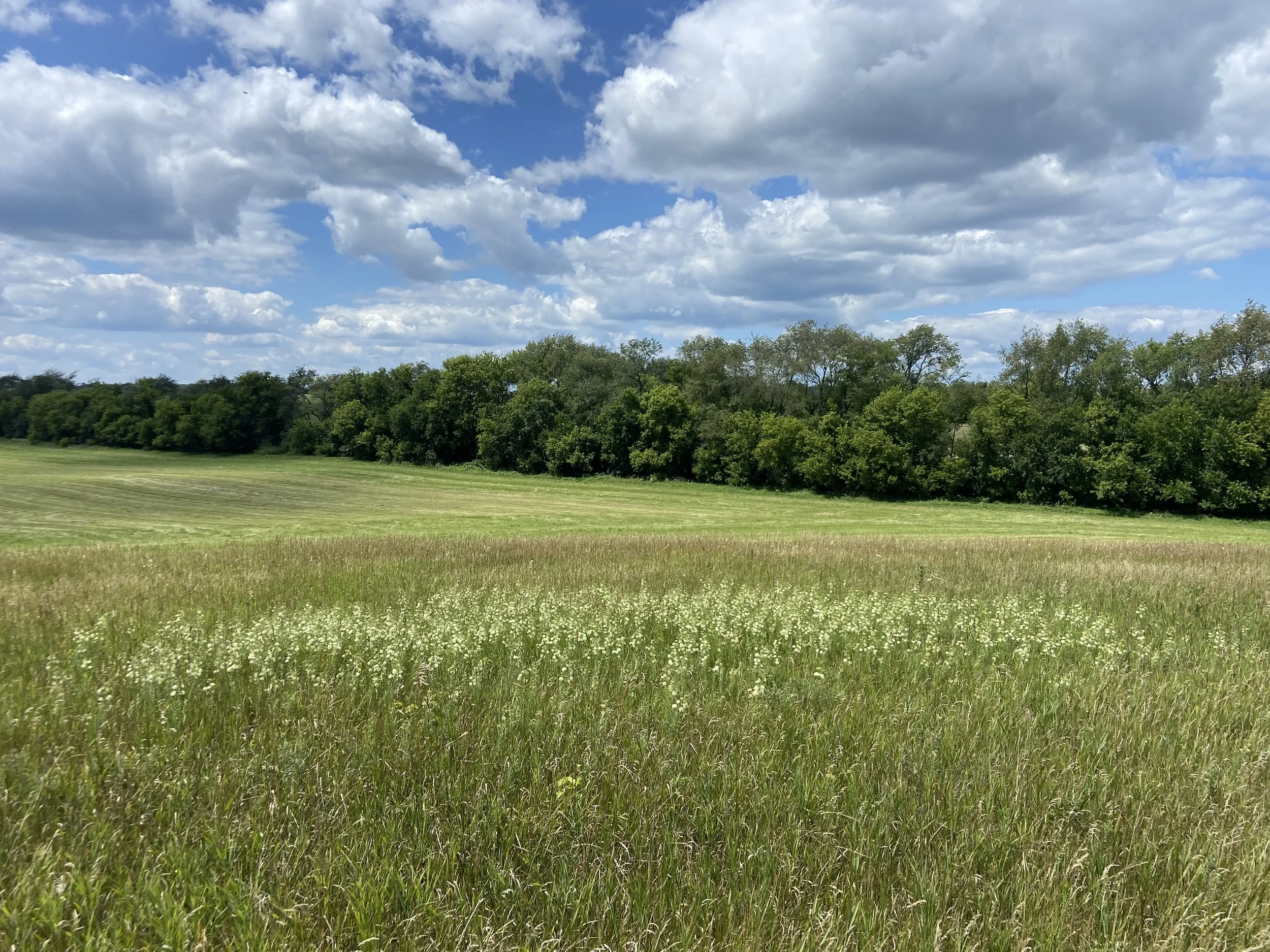Hillside Prairie Sanctuary
Today’s rolling landscape was formed by the movement of the glaciers, shaped by the fire management practices of the Ho-Chunk people, and farmed by five generations of the Gunnulson family. As fencerows are removed and prescribed burning is reintroduced, glimpse the grand, open prairies with pockets of oak savanna that once covered much of southern Wisconsin.
VISITOR INFORMATION
Work is underway to make the property open for public access. In the meantime, we will host guided tours seasonally to explore existing habitats and share a vision for the future. For questions, please email goosep@swibirds.org.
Since the purchase of Hillside Prairie Sanctuary was funded in part by the Knowles-Nelson Stewardship Program, this property is open to public hunting during regulated Wisconsin DNR seasons. Visitors are encouraged to wear blaze orange for visibility during November and December, or to postpone their visit until after the end of the hunting season.
A land steeped in history
View of the East Koshkonong Church from Jean’s Prairie, a newly restored section, in August 2017 (SoWBA photo).
In south central Wisconsin, moraines, kettles, and drumlins were formed when ice from the last glacial period (also responsible for forming the Great Lakes) receded. These glaciers also ground down rocks, clays, and minerals, depositing them and making fertile, tillable soils.
On these ancestral lands of the Ho-Chunk, the original sweeping prairies and oak savannas were maintained by tribes through fire management and other traditional ecological practices. Fire in particular helped improve the richness of the soil while creating diverse habitat niches which allowed many species of plants and wildlife to thrive.
Those rich, fertile, tillable soils also made the area attractive to European settlers arriving in the 1800s. In this area, which settlers had named the Koshkonong Prairie, Gunnul Olson Vindeg arrived from Norway with his family in 1839. One of the family’s original dwellings, a dug-out shelter, can still be found in the southwestern section of the property. Nearby, a few towering Norway spruce trees which sprouted from seeds brought overseas in the mid-1800s are still standing today.
Over the next two centuries, five generations of the Gunnulson family continued acquiring adjacent land, growing the property to 348 acres.
Becoming a Sanctuary
In late 2015, David Gunnulson, Gunnul Olson Vindeg’s great-great-grandson, approached Southern Wisconsin Bird Alliance (then Madison Audubon) about permanently protecting the land for future generations. By then, David had been employing ecologically conscious agricultural practices to the great benefit of many grassland bird species. Hayfields—which had been retained or converted back from row-cropping—were abundant with Bobolinks, Dickcissels, and Sedge Wrens. The fields would be left alone during nesting season and cut after the young birds had fledged and moved on.
(L to R): Matt Reetz, SoWBA executive director; David Gunnulson; and Mark Martin, Goose Pond sanctuary manager, stand in a prairie restoration on the property in July 2024 (photo by Kaitlin Svabek/SoWBA).
In 2016, our organization’s board of directors acknowledged the importance of this property, especially as a haven for grassland birds, and voted to pursue acquisition. Since then, David worked with the organization to preserve the property’s natural characteristics and collaborate to begin restoring ecosystems. In November 2016, staff and volunteers planted 20 acres to prairie. That site now provides refuge a diverse array of native species, including the federally endangered rusty-patched bumble bee.
After nearly a decade of hard work and planning, in December 2024, Southern Wisconsin Bird Alliance officially acquired the property. The acquisition was made possible with generous grants from the Knowles-Nelson Stewardship Program, Dane County Conservation Fund, and North American Wetlands Conservation Act (Ducks Unlimited/US Fish & Wildlife Service).
Currently, SoWBA staff and volunteers are working hard to restore native habitats at the sanctuary to benefit even more species of birds and other wildlife. We are in the process of planning trails, signage, and other infrastructure to improve visitor access at our newest sanctuary. Stay tuned for more updates in the coming months!






